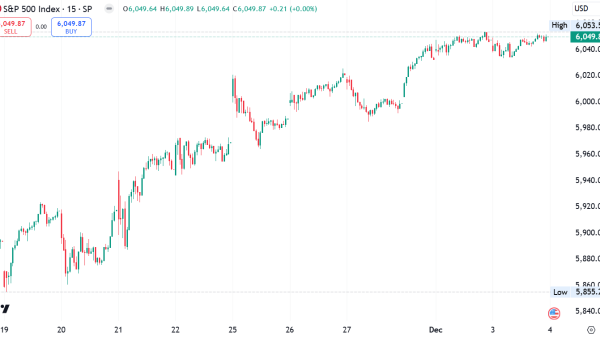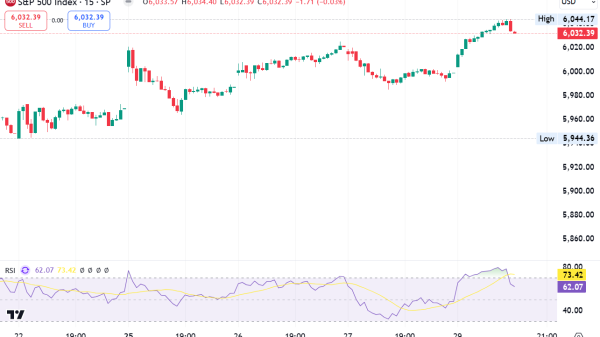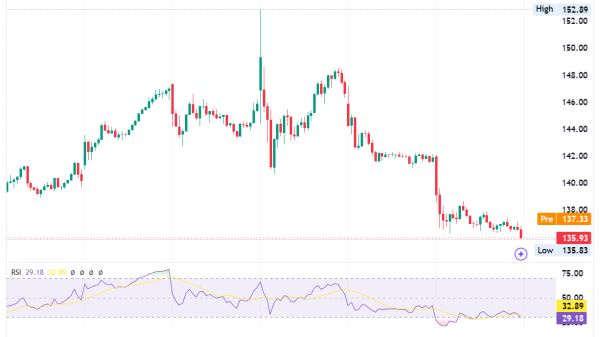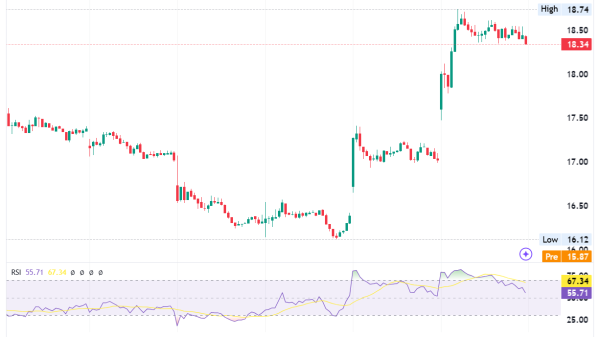What is Volume Profile Indicator: A Trader’s Guide
Key Takeaways:
Volume Profile is essential for traders to understand market dynamics and make the best possible decisions.
It visually represents trading volume across a specific price range, aiding in identifying areas of high or low activity.
Traders use Volume Profiles to spot crucial support and resistance levels, improving their price action strategies.
To trade effectively with this indicator, it is important to understand a few elements. These elements include Point of Control (POC), Value Area (VA), High Volume Nodes (HVNs), and Low Volume Nodes (LVNs).
Traders can calculate Volume Profiles by selecting a timeframe, segmenting it by price, and plotting volume data. It offers practical applications, including support/resistance identification and breakout signal detection.
Have you ever wondered what the volume profile indicator represents? Why is it so essential to deeply understand the world of technical analysis?
Many traders now use the MT4 Volume Profile indicator to understand the market and make smarter trading decisions.
This tool examines volume data in addition to price changes. It enables a comprehensive view of market activity and identifies significant support and resistance levels.
To learn how to read the volume profile indicator, let’s get all the basic information about it, shall we?
What does the Volume Profile Indicator represent?
The Volume Profile shows the trading volume at different prices during a specific period. It visually depicts the distribution of volume across a specific price range.
This indicator uses a histogram chart to show trading volume at different price points. It helps traders easily see areas of high or low trading activity.
How to use the Volume Profile indicator?
Here is what you need to know about the volume profile indicator:
Collect data from shorter timeframes of the same symbol, like 1-minute daily bars.
Note where bars traded and determine if they closed higher (Up) or lower (Down) than opened.
Add this data to the Volume Profile histogram.
Types of Volume:
Trade volume for stocks.
Tick volume for indices, forex, and crypto CFDs. It uses up/down volume based on price direction.
Key Levels:
POC: Highest traded volume price.
Profile High: Highest price.
Profile Low: Lowest price.
VA: Range with 70% of total volume.
VAH: Highest price in VA.
VAL: Lowest price in VA.
Calculating VA:
Find the total traded volume.
Multiply by 0.7 or your chosen percentage.
Could you start at the POC and record its volume?
Add volumes of two rows above and below POC.
Add the larger volume to the POC.
Repeat until the total volume matches or exceeds the value from step 2.
The highest row in the range is VAH; the lowest is VAL.
Non-Standard Charts: On charts like Heikin Ashi or Renko, be cautious. Data is synthetic, affecting volume data. Failure to consider this can lead to inaccurate predictions and impact trading strategy.
Understanding Volume Profile
To grasp the Volume Profile, focus on its key elements:
Point of Control (POC): The level with the highest traded volume. Like VWAP, the price often gravitates towards POC. It can serve as support, resistance, or a take-profit point.
Value Area (VA): The price range with the most volume (usually 70%). It encompasses Value Area High (VAH) and Value Area Low (VAL), often used as support/resistance.
High Volume Nodes (HVNs): Zones of significant volume, suggesting strong support/resistance.
Low Volume Nodes (LVNs): Areas with low volume, signalling potential breakouts or rapid price shifts. Price typically moves swiftly from LVN to HVN.
How to calculate Volume Profile data?
To calculate this specific profile data, follow these procedural steps based on your chosen time frames:
Please select the time frame you wish to analyze using the Volume Profile, whether a day, week, or month.
The sentence can be simplified and split into shorter coherent sentences as follows: The trading volume at different prices is displayed. This helps traders locate important parts in the market’s structure, such as High Volume Nodes (HVN) and Low Volume Nodes (LVN).
Compute the volume traded within each price segment over the defined timeframe.
Visualize the Volume Profile by displaying the volume data for each price segment. This can be achieved by using a histogram or profile chart. These chart types illustrate the Volume Profile, aiding your analysis across different time frames.
How to trade with volume profile indicator?
Here are some of the key practical Uses of Volume Profiles in Trading Strategies:
Support and Resistance: Volume Profile identifies robust support and resistance levels based on trading activity, enhancing price action strategies. High-volume areas signal congestion and potential reversals, guiding entry, exit, and stop-loss decisions on the price chart.
Volume Profile identifies market price levels accepted or rejected, providing insights across different time periods. Thin profiles imply rejection, while thick ones signify the market’s acceptance of value, aiding trading decisions.
The Point of Control (POC) is the highest traded volume level and is important in trading strategies. Traders can incorporate POC into their analysis across different trading sessions, spotting potential breakouts or reversals.
Breakout Signals: Volume Profile pinpoints breakouts when prices surpass high-volume nodes, a crucial component for trading strategies. This data helps traders confirm buying or selling opportunities during various trading sessions.
Volume Profile helps find the best stop-loss levels, lowering the chance of stopping trades too early and reducing risk. By analyzing low-volume zones, traders can make informed decisions on moving averages and manage risk effectively.
Top 4 Volume Indicators for Day Trading
Have you ever wondered what the best volume profile indicator is? Let’s get to know about them:
On-Balance Volume (OBV):
Measures stock direction based on conviction.
Focus on trend direction for trading decisions.
Money Flow Index (MFI):
Identifies overbought or oversold areas.
Helps spot divergences for potential entry points.
Volume-Weighted Average Price (VWAP):
Used on intraday charts to confirm trends.
Pay attention to price trends relative to VWAP.
Accumulation/Distribution Line (Accum./Dist.):
Detects divergences in price and volume.
Reflects supply and demand, influencing stock prices.
All these indicators are on TradingView.
Using Volume Profile with Other Indicators
When traders combine volume profiles with other indicators, they better understand the market and find trading opportunities. Here’s how:
Technical Indicators: Traders use moving averages, trend lines, and volume profiles to confirm their trading signals.
Traders can use candlestick patterns and volume profiles to determine when to enter or exit trades.
Fundamental Analysis: Traders also use earnings reports with the volume profile to spot trading chances.
Using volume profiles with other indicators, traders can see the market more clearly and make smarter trades. But remember, no single indicator has all the answers, so it’s important to use them wisely.
Bottom line
Volume Profile is a useful tool for traders, giving insights into market dynamics and helping with decision-making.
It visually illustrates trading volume across various prices, enabling traders to identify key components like High Volume Nodes (HVN) and Low Volume Nodes (LVN) within the market’s structure.
Traders utilize this information to identify potential support and resistance levels, particularly in the short term.
Understanding the volume at each price level is crucial for successful trading. It allows traders to comprehend market activity within a specific price range.
The post What is Volume Profile Indicator: A Trader’s Guide appeared first on FinanceBrokerage.





























